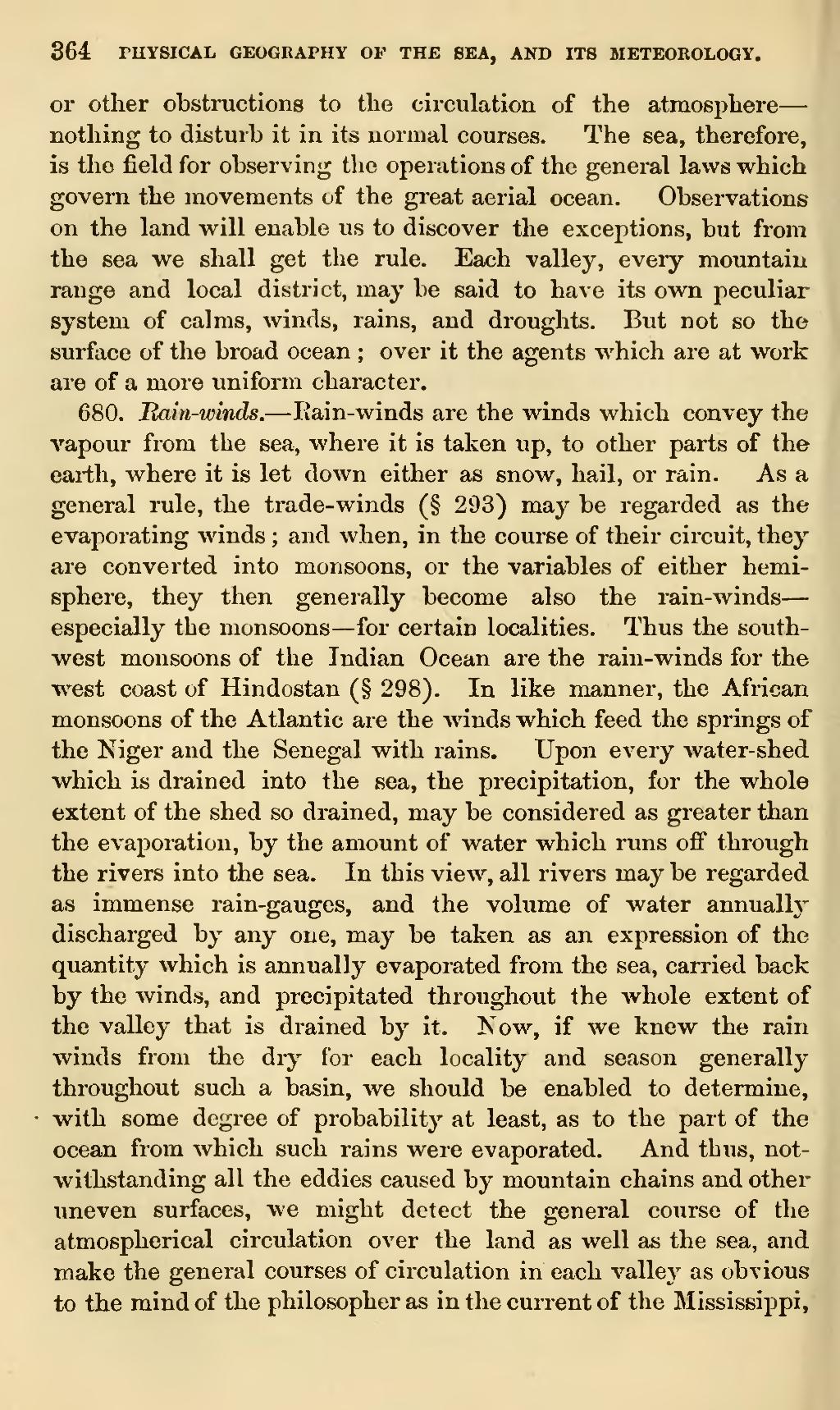or other obstructions to the circulation of the atmosphere—nothing to disturb it in its normal courses. The sea, therefore, is the field for observing the operations of the general laws which govern the movements of the great aerial ocean. Observations on the land will enable us to discover the exceptions, but from the sea we shall get the rule. Each valley, every mountain range and local district, may be said to have its own peculiar system of calms, winds, rains, and droughts. But not so the surface of the broad ocean; over it the agents which are at work are of a more uniform character.
680. Rain-winds.—Rain-winds are the winds which convey the vapour from the sea, where it is taken up, to other parts of the earth, where it is let down either as snow, hail, or rain. As a general rule, the trade-winds (§ 293) may be regarded as the evaporating winds; and when, in the course of their circuit, they are converted into monsoons, or the variables of either hemisphere, they then generally become also the rain-winds—especially the monsoons—for certain localities. Thus the south-west monsoons of the Indian Ocean are the rain-winds for the west coast of Hindostan (§ 298). In like manner, the African monsoons of the Atlantic are the winds which feed the springs of the Niger and the Senegal with rains. Upon every water-shed which is drained into the sea, the precipitation, for the whole extent of the shed so drained, may be considered as greater than the evaporation, by the amount of water which runs off through the rivers into the sea. In this view% all rivers may be regarded as immense rain-gauges, and the volume of water annually discharged by any one, may be taken as an expression of the quantity which is annually evaporated from the sea, carried back by the winds, and precipitated throughout the whole extent of the valley that is drained by it. Now, if we knew the rain winds from the dry for each locality and season generally throughout such a basin, we should be enabled to determine, with some degree of probability at least, as to the part of the ocean from which such rains were evaporated. And thus, notwithstanding all the eddies caused by mountain chains and other uneven surfaces, we might detect the general course of the atmospherical circulation over the land as well as the sea, and make the general courses of circulation in each valley as obvious to the mind of the philosopher as in the current of the Mississippi,
